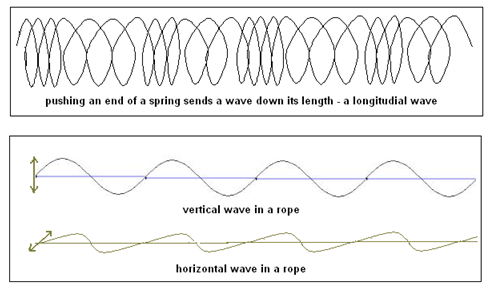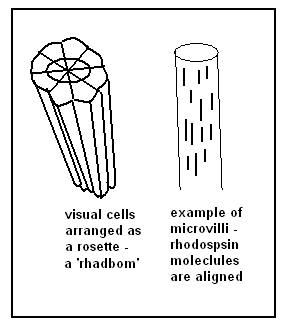Animals can use a property of light that is invisible to humans, says S.Ananthanarayanan.
Birds are known for remarkable quality of vision. They have larger eyes, as a proportion to body size, than other animals, and the eyes are adapted, in the case of grazers, for a wide field of view, or, in the case of birds of prey, for sharp focus. The colour-sensitive nerve endings too, in the eyes of birds, fish and reptiles, are of four kinds, against only one kind that we have, and this helps some of them see in the ultra-violet. Insects have compound eyes, which help them cover a very wide angle of view by each eye and detect very fast movement. And then, some snakes have ‘pits’, which are like eyes and can detect the warmth of prey in pitch darkness.
But a most remarkable feature of birds and insects is that they can sense a property of light called polarization, which helps them deduce the position of the sun, even if it has just set or is covered by clouds. In fact, some birds can even tell the position of the moon with the help of this property of light, in moonlight! But the best that human eyes can do is to tell whether the light is bright or dim, although the property of polarization of light is used, in special sun-glasses, to cut glare due to reflected light.
Stefan Greif, Ivailo Borissov, Yossi Yovel and Richard A. Holland, scientists at Belfast, Seewiesen, Germany and Tel Aviv report in the journal , Nature Communications, that they have found that bats too, can make out the polarization of light, and this helps the calibrate their magnetic compass, so that they can navigate at night. Bats use sound waves and echos to detect and pinpoint prey, but they need other means to know their way about and get back to their roosting place after a night out in search of food.
Polarisation
Polarisation is a property of a certain kind of waves, which arise because of movement not in the direction of the wave, but in a direction at right angles to the direction of the wave. The other kind of wave is like sound waves, or a wave that travels down a coiled spring, when one end is struck. In this kind of wave, the movement is to and fro, in the same direction as the wave. But in the other kind, which is like sea waves, or ripples on water, the movement is up and down, which is across the direction of the wave. This kind of wave also arises when a person shakes one end of a rope which is fixed at the other end. The wave moves down the length of the rope, but the movement of the rope itself is up-down, if the person shakes the loose end that way, or left-right, if the loose end is shaken from side to side.

The case of light is like that of the wave that moves down the rope, except that a beam of light consists of billions of waves, with the rope being shaken in every possible direction. When there is a fixed direction, we say that the wave is posarised in that direction. The waves on water are hence always polarized in the vertical, that is, the up-down direction, and the wave in the rope is polarised in the direction that the person shakes the loose end. But in a beam of light, everything is mixed up and there is no polarization.
Except that the direction of movement, of electric and magnetic effects in the case of light, which is an electro-magnetic wave, becomes important when light passes through some materials or when it reflects off a surface. When passing through some materials, the speed of light through those materials depends on the direction of polarization. Light of different polarization is thus bent to different extents when passing through such material, quartz is an example, and an unpolarised beam is split into two components, of opposite polarization. Even on reflection, although the incident and the reflected beams make the same angle at the surface, not all parts of the beam get reflected. The part where the oscillation of the electric field is suitable is reflected strongly, while the remaining part is either transmitted or absorbed. In this case, we get a partially polarized beam in the reflected portion and another partially polarized beam in the transmitted portion. If the angle is just right, the polarization can be complete.
Sunlight
The hot parts of the sun which give rise to sunlight have all orientations and the light is not polarized. Except that the brightness in the daytime is never direct sunlight but is light that is reflected or reflected or scattered light. This kind of light is generally polarized, to some extent, and the direction of polarization depends on which way the sun is shining! This is the feature that helps birds and insects, which can detect polarization of light, to work out the location of the sun, and hence a sense of direction.
The way birds and insects can work this trick has to do with the structure of their eyes. Detection of light in the eyes is set in motion by a reddish-purple biological pigment called rhodopsin, which bleaches instantly when exposed to light, and then gradually regains its original colour. But the bleaching action is fastest if the axis of polarization is along the axis of the rhodopsin molecule itself. In humans and mammals, the rhodopsin molecules are randomly oriented and the detection is the same for all kinds of light. But in insects and some others, the photoreceptor cells are in tubes, called microvilli, which are arranged in parallel. As the rhodopsin molecules are aligned to the long axes of the tubes, the visual cell itself is sensitive to light of a given polarization.

During the day, birds find their way about with the help of things, like houses or trees, which are clearly visible, and also the position of the sun. But in the dark, they use the direction of the earth’s magnetic field. During the day, even when the sun is not visible, birds are able to make out the directions with the help of the polarization of light, which is strongest at dusk, when the sun’s rays are slanting. But to use the earth’s magnetic field, during the night, they first need to correlate the direction of the field with visual signposts. This action is always possible, during the day, thanks to birds being able to make out the polarization of light.
And now the bat
While birds and insects have been known to make use of the polarization of light, this ability has not been seen among mammals. In this context, the discovery that female greater mouse eared bat uses polarization cues at sunset to later find her way home, with the help of the earth’s magnetic field, opens a new area of study, of the working of the visual biology of mammals. The trial was with 70 adult female bats, who were exposed to light of different polarization in experimental boxes, to simulate the sky at sunset. The direction the bats took as the home direction, when they were released, when it was dark, was seen to change according to the direction of polarization of the light in the boxes.
This is a surprising discovery, as bats do not have any of the structural features of the eyes of birds, insects or fish, to be able to perceive polarization of light. How the bats detect polarization of light and how they use it hence needs to be studied.